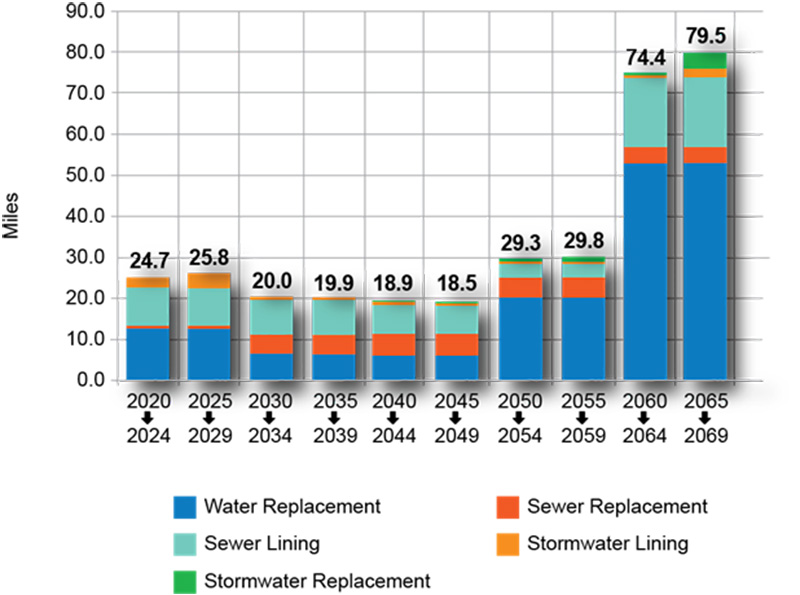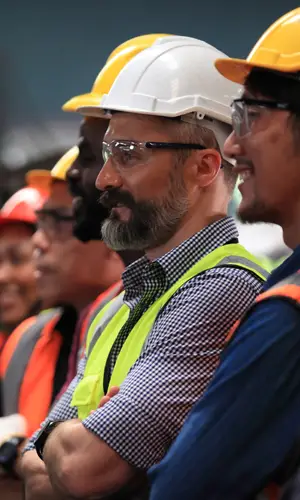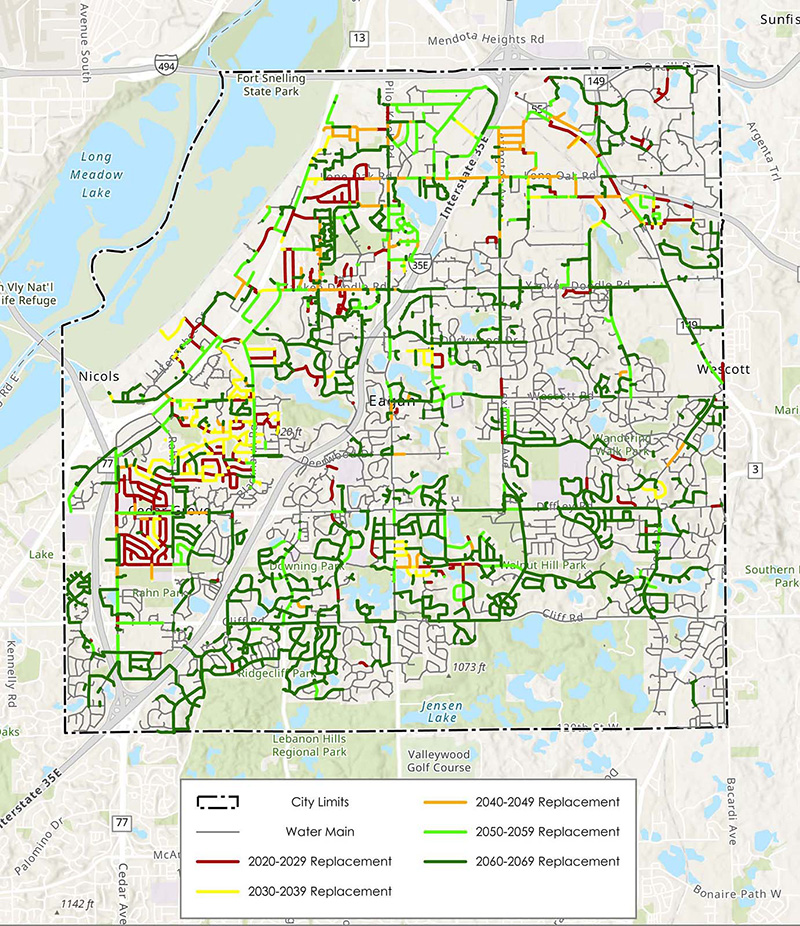LONG-TERM PLANNING SYSTEM RENEWAL PLANNING
Eagan, Minnesota
Flexible and Adaptive Modeling to Ensure Future Capital Improvements are Adequately Funded
The City of Eagan experienced rapid growth in the late 70s and early 80s, which resulted in much of the City’s infrastructure being installed within a single decade. For years, there was minimal need for capital rehabilitation and replacement (R&R). In recent years however, the City has experienced R&R needs that outpace the planned funding. Furthermore, as the inevitable end of useful infrastructure life creeps closer, the City desired a holistic plan for addressing infrastructure needs for the next 50 years.Project Details
Date: 2020
Client: City of Eagan
Key Project Elements
- Long-Term Utility and Financial Forecasting
- Flexible and Adaptive Modeling
- Risk-Based Infrastructure Prioritization
- Probabilistic Failure Modeling
AE2S partnered with the City to perform a detailed analysis of the City’s five utilities (water, sanitary sewer, storm sewer, water quality, and streetlights) and developed a capital needs assessment driven by the risk of asset failure over the next 50 years. The risk assessment was completed following ISO 55000 guidelines of analyzing both consequence of failure (COF) and likelihood of failure (LOF) separately. Factors such as proximity to critical facilities, break history, number of services connected, soil corrosivity, and many others were evaluated with the City to develop a comprehensive method for prioritizing capital improvements.
A model was used to simulate both the aging of infrastructure by decade, as well as the rehabilitation and replacement of the prioritized capital improvements. This iterative process provided a vision of which improvements should be budgeted for and completed in each year horizon to maintain the City’s level of service.
 With the needs assessment completed and capital improvements identified, a detailed financial model was built to help the City budget for future capital expenditures. This model is extremely adaptable to allow the City to adjust identified projects to align with overlapping street improvement projects and other related activities to allow for cost sharing opportunities. The results of the financial modeling suggested a doubling of R&R budgeting and nearly tripling R&R investments by 2040.
With the needs assessment completed and capital improvements identified, a detailed financial model was built to help the City budget for future capital expenditures. This model is extremely adaptable to allow the City to adjust identified projects to align with overlapping street improvement projects and other related activities to allow for cost sharing opportunities. The results of the financial modeling suggested a doubling of R&R budgeting and nearly tripling R&R investments by 2040.
The overall results of the study are being used to program infrastructure improvements, to set the utility rate structures for the City, and to ensure future improvements can be adequately funded.





